火星 ALPO-Japan Latest

Mars Image 2014/05/14(UT)
Joaquin Camarena,Christopher Go,Eusebio Martinez,Gary Walker,Paul G. Abel,Xavier Dupont,Stanislas Maksmowicz,Christophe Pellier,Rob Bullen
J.Camarena,Christopher Go,E.Martinez,G.Walker,P.Abel,X.Dupont,S.Maksmowicz,Christophe.P,R.Bullen
|
Joaquin Camarena(305mm SC) |

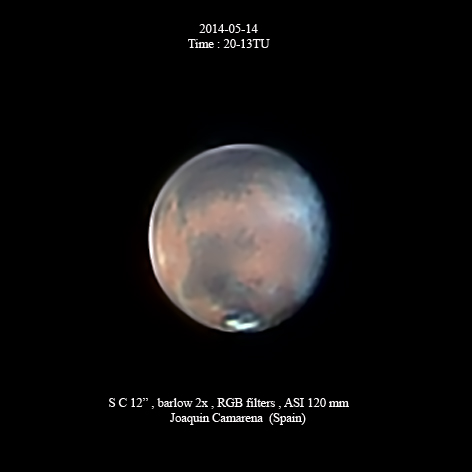 [Joaquin Camarena : Spain]
[Joaquin Camarena : Spain]
|
Christopher Go (355mm SC) |
Seeing still variable this evening.
Syrtis Major is prominent today. The clouds in Hellas is very
bright. The north polar cap is getting smaller. There is a bright
afternoon cloud over Elysium. The cloud on the left are morning
clouds over Chryse.
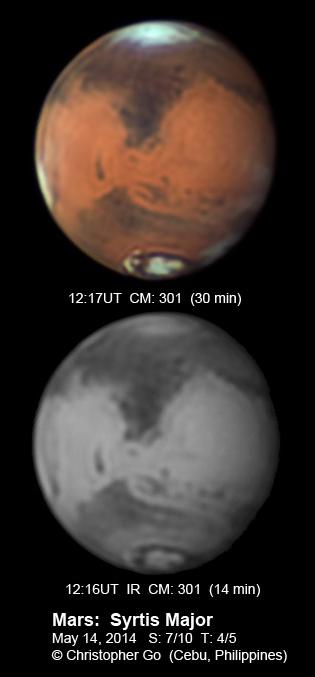 [Christopher Go : Cebu Philippines]
[Christopher Go : Cebu Philippines]
|
Eusebio Martinez(305mm Newtonian) |
2014-05-14_20,14,1 U.T
CM 57,5o Diameter 13.43” Ls 130.49 Alt 44o
305mm Newtonian Orion XX12G,ASI 120 MC,Powermate X5,IR/UV
Seeing 2-3/10 Trans 5/10
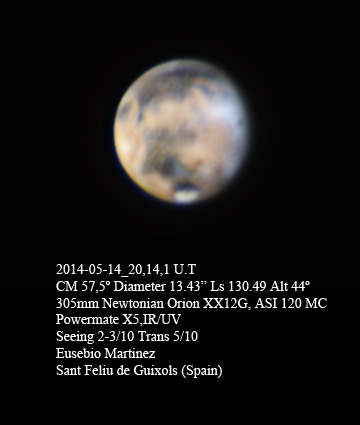 [Eusebio Martinez:Sant Feliu de Guixols (Spain)]
[Eusebio Martinez:Sant Feliu de Guixols (Spain)]
|
Gary Walker(355mm SC & 254mm APM) |
Seeing was only fair to poor before I got clouded out. Orographic clouds stand out over the Tharsis volcanoes as well as over Elysium near the sunrise limb.
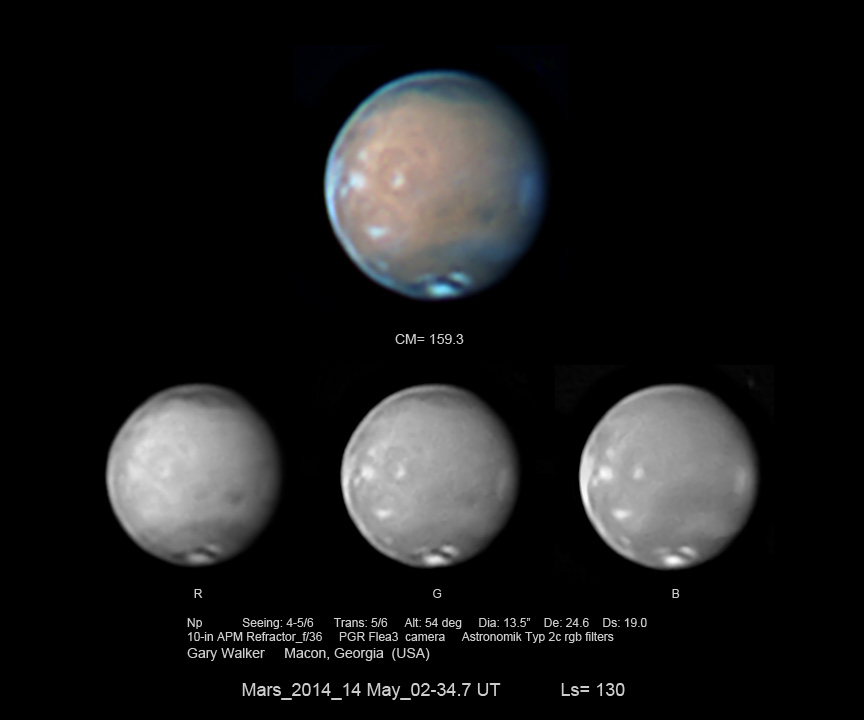
[Gary Walker:Georgia:USA]
|
Paul G. Abel(203mm reflector) |
Attached is a drawing of Mars made on 14th May. Not much on the disk,Acidalium and Solis Lacus on the proc. limb. The north polar cap is now very small. The proc limb was bright,no doubt due to white cloud activity.

[Paul G. Abel:Leicester:United Kingdom]
|
Xavier Dupont (180mm Newtonian) |
Newton 180 F7
Powermate x5 ADC I-Nova PLAC+
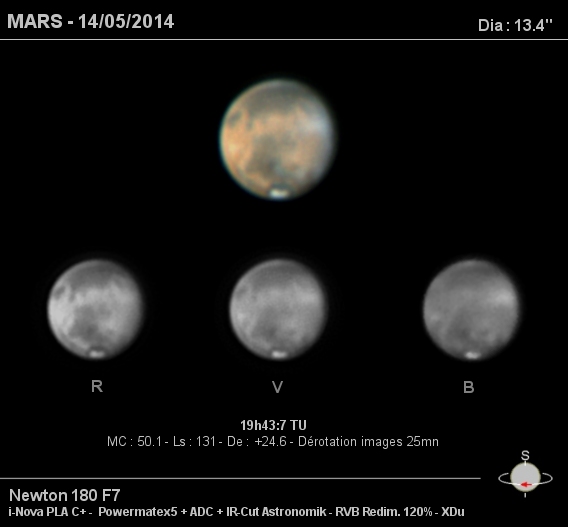 [Xavier Dupont,Saint-Roch France]
[Xavier Dupont,Saint-Roch France]
|
Stanislas Maksymowicz (100mm refracter) |
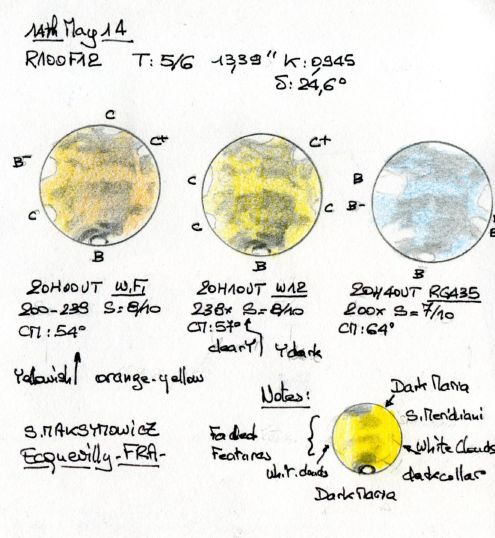 [Stanislas Maksymowicz Ecquevilly,France]
[Stanislas Maksymowicz Ecquevilly,France]
|
Christophe Pellier (250mm Cassegrain) |
These past evenings I have been observing Mars with a regular spacing of imaging and during as many hours as possible, as this is the best way to image the red planet.
For the night of May 14th, I'm seeing 2 to 3 successive cloud fronts near the polar cap with a cloud-free post-frontal area (see blue light). The central one over Mare Acidalium has moved eastward during the two hours and half. See animation :
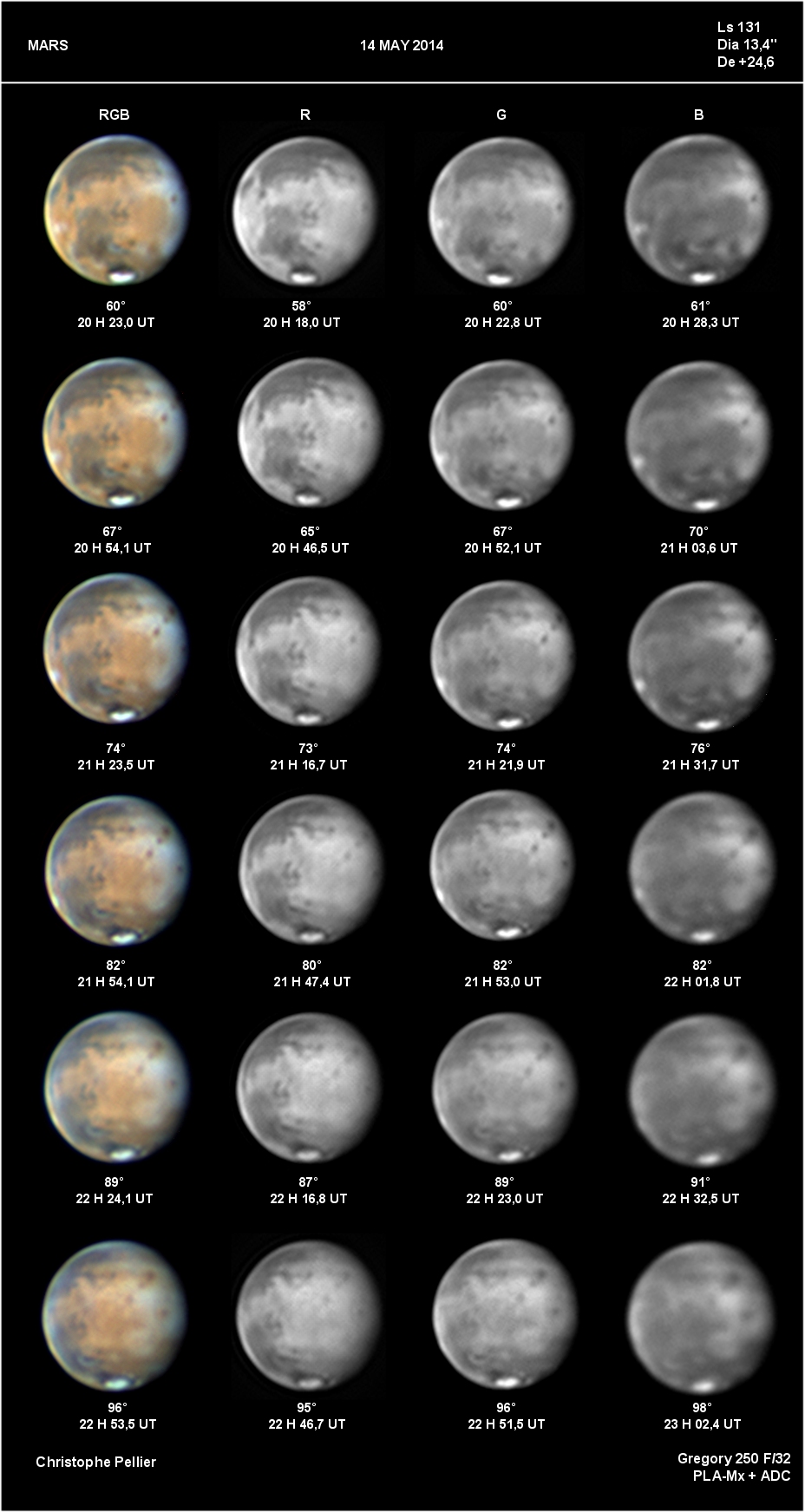
Quick WinJupos measurements say that the front has shifted around 10° during the session, this would represent 350 km in distance at a speed of 130 to 140 km/h. I will study more on this
Here is the full set (6 RGB series):
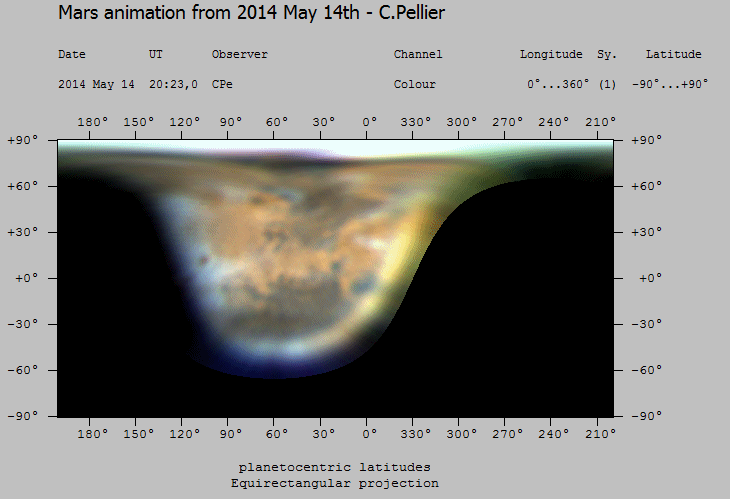
[Christophe Pellier Bruz City,France]
|
Rob Bullen(Celestron 203mm SC) |
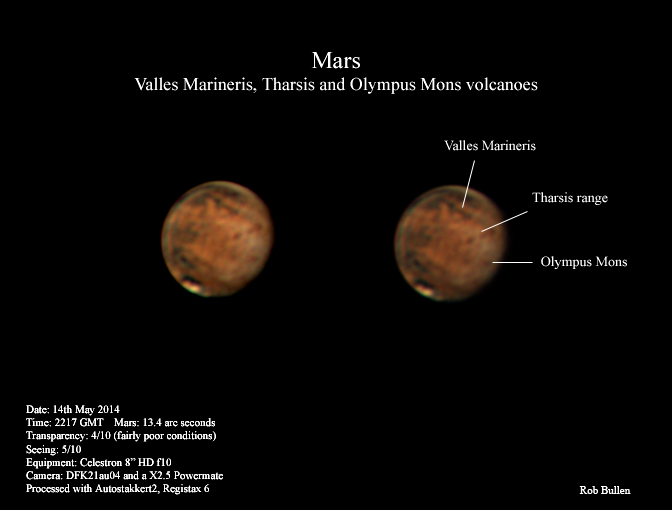 [Rob Bullen: Gloucestershire,UK]
[Rob Bullen: Gloucestershire,UK]


 [Joaquin Camarena : Spain]
[Joaquin Camarena : Spain] [Christopher Go : Cebu Philippines]
[Christopher Go : Cebu Philippines] [Eusebio Martinez:Sant Feliu de Guixols (Spain)]
[Eusebio Martinez:Sant Feliu de Guixols (Spain)]

 [Xavier Dupont,Saint-Roch France]
[Xavier Dupont,Saint-Roch France] [Stanislas Maksymowicz Ecquevilly,France]
[Stanislas Maksymowicz Ecquevilly,France]

 [Rob Bullen: Gloucestershire,UK]
[Rob Bullen: Gloucestershire,UK] ALPO-Japan Latest
ALPO-Japan Latest